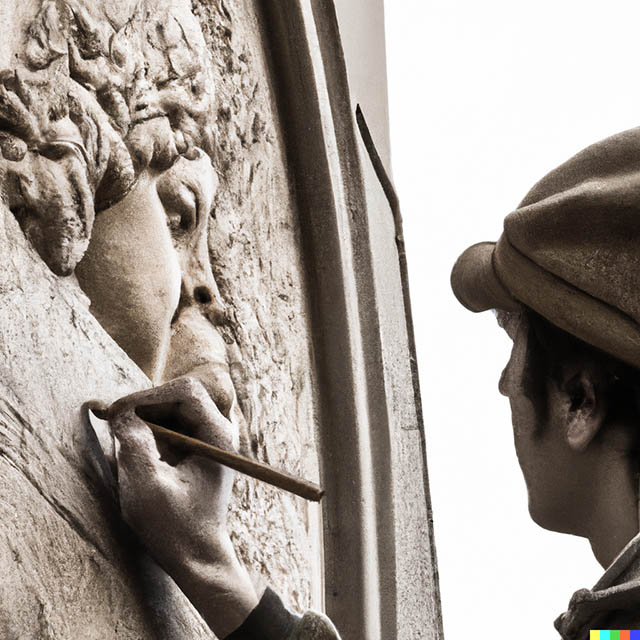“The Mysterious Stone of the Cathedral, Origin of the Hidden Demon.”
This story takes us back to the year 1539, on a chilly February afternoon at three o’clock, in the Plaza de las Pasiegas in Granada. In this setting, we find an apprentice sculptor eager to secure a job in the construction of the majestic cathedral. With determination, he approached the seasoned masons and asked for the director of the works, until his steps led him to the master architect, Diego de Siloé.

Diego de Siloé, perhaps in a somewhat gruff mood, decided to get rid of him in a peculiar way and tasked him with sculpting whatever he wanted on a block of stone. Faced with this unexpected offer, the apprentice asked again about the object of his task. Siloé’s response, delivered with ill humor, was simple but unusual: “Whatever. A demon!” And so began the work of the newcomer.
When the work was finally completed, Diego de Siloé was astonished by the remarkable quality of the apprentice’s craftsmanship. Impressed, he kept his promise and placed the sculpted stone in a prominent position in the Cathedral.
However, before doing so, Siloé decided to add his own artistic contribution to the back of the same stone block. He created the figure of an Ecce Homo, surrounded by ornamental elements such as serpents and flaming torches. Today, although the stone has suffered the passage of centuries and is deteriorated, it still stands above the lintel of the Puerta de los Colegios, also known as the Puerta del Ecce Homo, at the head of the cathedral. This entrance is accessed through the Gran Vía and bears the name of the talented Diego de Siloé, who left his mark on the history of the Granada Cathedral